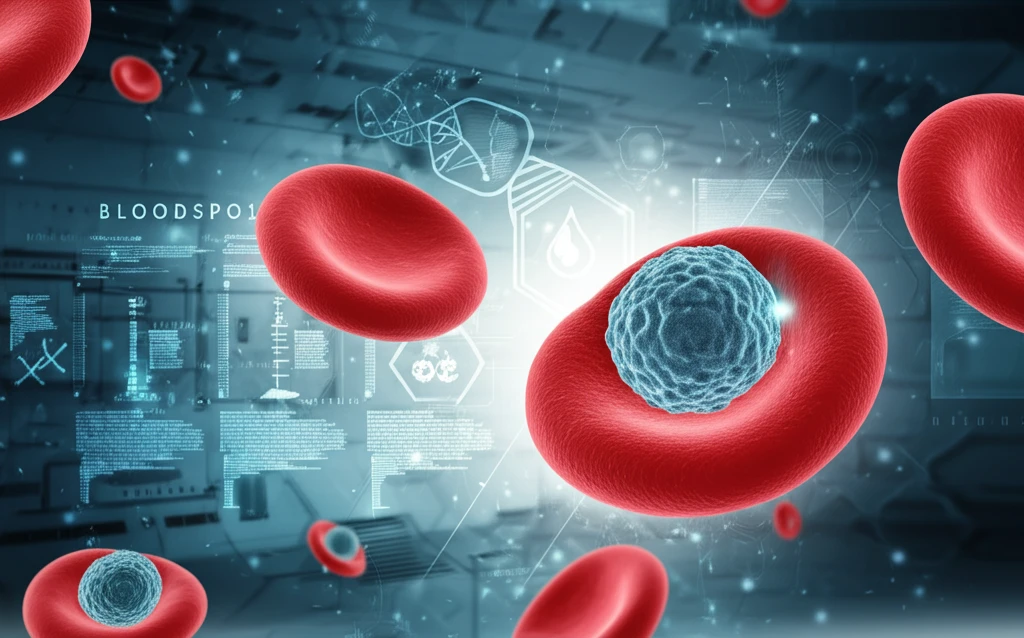
Decoding Blood: How New Databases are Revolutionizing Leukemia and Stem Cell Research
"Dive into the world of BloodSpot, the updated database making waves in hematopoiesis research with its enriched single-cell mRNA sequencing profiles, offering groundbreaking insights into blood disorders."
In the realm of medical research, understanding the intricacies of blood cell development and related disorders is crucial. BloodSpot, a gene-centric database focused on mRNA expression in hematopoietic cells, offers a significant leap forward. Its web-based interface provides a multi-faceted approach to visualizing gene queries, analyzing survival rates in Acute Myeloid Leukemia (AML) patients, and presenting expression data in an interactive developmental tree.
The recent integration of single-cell data marks a substantial upgrade, incorporating unbiased dimensionality reduction methods to illustrate gene expression across the entire spectrum of hematopoiesis. This enhancement, combined with select analytical functionalities like Student's t-tests and correlation analysis, empowers researchers to generate and test hypotheses more efficiently.
With updated visualizations accommodating new data types and an expanded collection of RNA-sequencing datasets—both purified in bulk and at single-cell resolution—BloodSpot has amplified its sample size more than tenfold while maintaining simplicity in presentation. This freely available database at www.bloodspot.eu is set to be an invaluable resource for researchers in leukemia, hematopoiesis, cellular development, and stem cell studies.
Unlocking the Secrets of Blood: BloodSpot's Innovative Approach

BloodSpot (1) stands as a pioneering database in the study of healthy and diseased hematopoietic cells. Designed with the user in mind, its interface facilitates quick access to information, enabling hypothesis generation through gene-centric mRNA expression lookup throughout hematopoiesis and in expanded leukemic blasts.
- User-Friendly Interface: One-click, no-scroll access to relevant data on most screens.
- Detailed Cell Type Information: Transparent inclusion criteria for each cell type.
- Hypothesis Generation: Quick access for testing and generating new ideas.
The Future of Blood Research is Here
The BloodSpot webserver is updated with curated high quality RNA-sequencing data from both single cell and FACS sorted purified cells. It now includes >25 000 samples, that are presented in an easy-to-navigate manner, and requires only a gene name as input for results. The database interface continues to be a one-click service, even if modifications to data inclusion and statistical tests can be performed, if required for publication purposes. On a gene query a plot of expression will be shown along with survival data, or UMAP for single cell data, and a hierarchical display based on the hematopoietic development or sample correlation. A dropdown can display correlating genes or pathways and can be useful for hypothesis generation. The database has a steady growing userbase and fills a niche within existing databases. With this update we ensure that the BloodSpot remains a resource at the forefront of the hematopoietic field. New data will continuously be curated and added to the database. Furthermore, biannual meetings with a user group and developers will systematically review new data releases since the last update, to ensure data is up to date. The database should be relevant for all researchers and clinicians within haematopoiesis, cellular development and stem cells.
